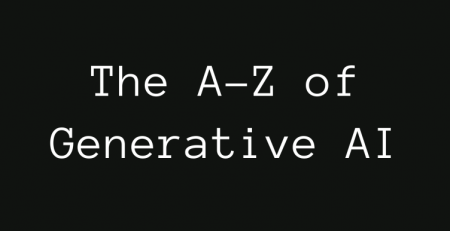Exploring the Impact of Large Action Models (LAMs)
Artificial intelligence has soared to extraordinary heights, as large language models (LLMs) demonstrate astonishing skill at creating human-like text, images, and speech with remarkable accuracy. Yet, the advent of Large Action Models (LAMs) marks a ground-breaking shift set to catapult AI’s potential to unprecedented levels. Not only could LAMs transform how we interact with technology across major industries, but they also have profound implications for the automation market.
By enabling AI systems to comprehend natural language instructions and then execute corresponding actions autonomously, LAMs could potentially disrupt or augment existing robotic process automation (#RPA) and intelligent automation platforms and solutions. This ability to seamlessly bridge the gap between language understanding and physical action execution positions LAMs as a game-changing force in the world of automation and beyond.
How LAMs Work: Understanding Goals, Executing Actions
So, what exactly powers LAMs capabilities? At their core, LAMs combine a deep understanding of language with the ability to execute complex, multi-step actions based on understood intents autonomously. In other words, LAMs can not only grasp intricate objectives articulated in natural language but also independently devise and implement action plans to fulfil those objectives.
This integration of linguistic comprehension and practical application distinguishes LAMs. Unlike LLMs, which excel in text interpretation and output generation but cannot interact with the physical world, LAMs bridge this divide. They act as sophisticated agents capable of navigating digital and physical environments to accomplish tasks, mimicking human interaction with the world.
Transforming Industries with LAM’s Capabilities
The potential applications of LAMs are vast and diverse, spanning industries.
- Healthcare: LAMs can revolutionize personalized medicine by analyzing patient data to recommend treatment plans, monitor vitals, and even assist doctors during surgeries. LAMs are also revolutionizing patient care through robotic assistants capable of understanding and performing a wide range of tasks, from patient monitoring to delivering medications. These robots can interpret healthcare professionals’ instructions, making them valuable assets in hospitals and care facilities.
- Robotics and Automation: Imagine robots equipped with LAMs that can understand and respond to complex commands, navigate dynamic environments, and even perform delicate tasks with higher precision.
- Consumer Electronics: For consumers, LAMs open up possibilities like seamless natural language interfaces that can understand our spoken intentions and act accordingly – whether it’s managing schedules, operating smart home devices, or even aiding with creative tasks. Devices like Anthropic’s Rabbit R1 provide an early glimpse into this future.
- Education: LAMs can personalize each student’s learning experience by providing adaptive tutoring, generating interactive learning materials, and offering individualized feedback, making education more accessible and engaging.
- Business Operations: Businesses could leverage LAMs to automate repetitive workflows, enhance customer support with context-aware conversational agents, and optimize operations.
- Customer Service Bots: LAMs are transforming customer service by powering bots that can understand and respond to a wide array of customer inquiries with unprecedented accuracy. These bots can autonomously resolve issues, guide users through services, and provide personalized recommendations.
- Creative Industries: LAMs hold the potential to assist in creative endeavours such as writing music, generating scripts, or designing products, and acting as intelligent collaborators for human creativity.
- Smart Home Systems: Innovations in smart home technology are increasingly integrating LAMs to understand and execute complex commands, enhancing the intuitiveness and functionality of home automation systems. These systems can now interpret nuanced human instructions to control lighting, temperature, security, and entertainment devices more seamlessly.
- Autonomous Vehicles: LAMs are driving advancements in autonomous vehicle technology, enabling cars to interpret and navigate complex environments. By processing natural language commands and environmental data, these vehicles can make informed decisions on the road, improving safety and efficiency.

Spawning New AI Paradigms
The Rabbit R1 stands as a prime example of emerging LAM capabilities within the consumer electronics sector. Other significant instances that highlight the transformative potential of this technology encompass:
OpenAI’s Agents:
OpenAI‘s innovative research is pioneering the development of advanced reinforcement learning agents. These agents learn to navigate and interact with the world through a process of trial and error. Although not categorized as traditional LAMs, they showcase the potential for AI to take meaningful actions in real-world settings based on environmental cues.
DeepMind’s Gato:
Developed by DeepMind, Gato is a single AI model trained across 604 tasks. These tasks span a broad spectrum, from gaming and robot control to language translation. Gato, while not explicitly labelled a LAM, illustrates the expansive capabilities of LAMs to adapt and function across a multitude of real-world scenarios.
Training Autonomous Agents: How LAMs Learn and Take Action
Imagine LAMs as students learning a new skill. But instead of textbooks, they use massive amounts of data and trial-and-error to learn. Here’s a breakdown of how they work:
- Training: LAMs are trained using a technique called reinforcement learning. This involves feeding them with vast amounts of data showing different situations and the best actions to take. It’s like showing them countless examples of how things work in the real world.
- Mapping Language to Actions: Like translating languages, LAMs learn to translate your instructions (language) into the best sequence of actions (steps) to achieve your goal.
- Adapting in Real-Time: LAMs are not just robots following pre-programmed instructions. They can sense their surroundings and adjust their actions based on what they find. Imagine them receiving live updates and changing their approach accordingly.
In simpler terms, LAMs learn by doing, constantly improving their ability to understand your instructions and take the right actions in the real world.
Bridging the Language-Action Divide
In summary, LAMs are like skilled assistants. They can:
- Understand your goals: They can grasp what you want to achieve even if you don’t give them step-by-step instructions.
- Turn your words into actions: They can figure out the best way to make your plan happen, breaking it down into smaller steps.
- Adapt to the situation: They’re not robots following a rigid script. They can sense what’s happening around them and adjust their actions accordingly.
Catalysing the Next AI Evolution
However, as transformative as LAMs are, they aren’t without their challenges. Ensuring the safety and reliability of autonomous systems that can impact the real world is paramount. There are also concerns around mitigating harmful biases that LAMs could inherit from training data. Furthermore, as LAMs integrate with more services and devices, upholding data privacy and security becomes critical.
While challenges exist, LAMs’ transformative possibilities are too vast to ignore. From personalized healthcare to intelligent automation, they’ll seamlessly integrate into our world. The automation sector faces a paradigm shift. LAMs could render traditional RPA obsolete, driving a new wave of intelligent automation.
As LAMs evolve, they have the potential to become indispensable collaborators. They will understand our goals and execute them with unprecedented precision. This will redefine human-AI interaction, fostering a symbiotic partnership with machines.
Beyond optimization, LAMs could spark a design renaissance, leading to more intuitive interfaces that align with human thought processes. As LAM technology matures, it unlocks a tidal wave of innovation, cementing AI as an integral part of our future. A future where the lines between human and machine capabilities blur will empower us to achieve more, but at what human cost?
End.
Advertisement:
Need consulting help to understand Generative AI and how it applies to your business ❓ Then book a FREE 30 minute introductory call so we can discuss your specific business’s Artificial Intelligence, Large Language Models (LLMs), Data Analytics, or Generative AI needs – click here.
Check out my previous article here – The Death of Coding – Kieran Gilmurray











Leave a Reply